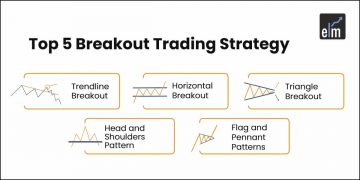Different personalities, time availability, and financial goals require different financial market trading styles. The two most common amongst them, scalping and swing trading, are based on traders who have different styles and goals. However, while both try to benefit from bets taken on the market’s direction, their approaches towards doing so could not be more opposite. Right, now let’s talk about swing and scalping trading, what it involves, the pros and cons of each and how to choose which approach is right for you.
What is Scalping?
Scalping is a high-volume trading strategy to profit off very small price changes. Scalpers make multiple buy/sell orders in one trading day and maintain their positions from seconds to minutes. If you want small wins, then you can build up gold that may add up to profit.
Key Features of Scalping
Hold Period is Short:
Since scalpers always wish to take their profits from small changes in price, they hardly stay at a particular position for any extended period of time. At the end of each trading session all the positions are closed.
No. of trades:
Scalpers may execute 30 trades per day or carry out hundred trades together.
Small Profits Per Trade:
Depending on the market they are in, scalpers are typically looking to make a small profit on each trade, often only a few pip or point wins.
Use of Leverage:
Since the profit per transaction is almost negligible, generally, it needs leverage to make more money.
Tools and Charts:
When traders use tick charts or short-timeframe charts (1–5 minutes) for fast search and execution, the opposite relationship is often observed.
Focus and Reflexes:
As a scalper, you need to have good instincts and be in tune with the market at all times.
Pros of Scalping
Quick Results:
Since the positions are closed, traders can instantaneously get results.
Not much exposure to risks from the markets:
Scalpers do not open and hold any overnight positions and thus are more immune to news events or gap moves in the markets.
Enormous Payouts for Trades:
Many businesses make more money scalping for one day compared to carrying any overnight position.
Cons of Scalping
Scalping is Difficult and Stressful:
Scalping is an extremely time-sensitive form of trading and requires much concentration.
Not for Novices:
Fast trading times can be too much to handle for the novice trader.
Technology Dependent:
Scalpers depend on sophisticated trading software, fast internet connections, and automobile tools.
What is Swing Trading?
Swing trading – A medium-term trading approach where traders attempt to make gains from “swings” within the price action of an asset. Unlike scalpers, swing traders hold their trades for days to weeks. This allows swing traders to leverage bigger market swings.
Key Concepts of Swing Trading
Long holding periods:
Swing trading is a short-term method where traders take advantage of price swings over days and weeks.
Fewer Trades:
Unlike scalpers, swing traders make fewer trades, usually just a few per week.
Higher Potential Profit per Trade:
These trades are held for a week to a month and thus have higher rewards than your average scalping trades.
Technical and Fundamental Analysis Usage:
Besides, technical indicators such as moving averages and support/resistance levels help enter or exit a position.
Daily and Weekly Charts:
Traders use the daily or weekly charts as the starting point for their analysis.
Patience and Discipline:
This strategy requires patience; traders should be able to resist reacting to anything that looks interesting and only get in the market when truly prepared and when conditions are genuinely favorable.
Pros of Swing Trading
Flexibility:
Since swing traders require fewer number of deals, and are unavailable at all time, it goes well with persons who have different commitments and occupations.
Fewer Stress:
Because, unlike scalpers, swing trading does not usually occur rapidly swing trading is stress-free.
Fewer Trades: Transactions/Trade Costs:
Comparison to Day trading, Swing trade involves lesser deal-making hence results in less Brokerage costs. In fact, the slower development of swing trading makes it an amazing alternative for novices to trading.
Cons of Swing Trading
Overnight Risk:
Swing traders are prone to overnight news, market gaps, and any other unforeseen events that can trigger a drastic change in prices.
Requires Patience:
Now having that patience can be difficult especially when the market is slow and the trades are taking ages to hit their targets.
Missed Opportunities:
Swing traders may miss the short-term market moves that scalpers can seize.
Market Timing Risks:
You will lose money if your timing or analysis is incorrect. This depends on how volatile the market is.
Scalping vs. Swing Trading: A Comparison
| Aspect | Scalping | Swing Trading |
| | |
| Holding period | Seconds to minutes | Days to weeks |
| Number of Trades | Dozens to hundreds per day | Few per week |
| Profit Per Trade | Small | Larger |
| Stress Level | High | Moderate |
| Charts Used | Tick charts or 1-5 minute charts | Daily or weekly charts |
| Transaction Costs | Higher due to frequent trades | Lower due to fewer trades |
| Suitable for beginners | Less suitable | More suitable |
| Market monitoring | Constant | Periodic |
Which strategy should you go with?
The choice between scalping and swing trading comes down to a few key factors:
Time Commitment:
Ideal for full-time traders: Scalping requires active participation during all trading hours. An alternative, swing trading can offer the flexibility to balance other responsibilities.
Risk Tolerance:
Scalpers are significant users of timely decision-making, and they can go about the stress of quick market movements. Swing traders tend to favor a smoother ride, accepting threat volatility for long-term gains.
Personality and Skills:
It requires discernment, patience, and discipline to scalp. If you are interested in analyzing trends and making informed decisions based on longer periods of time, swing trading would be apt for you.
Financial Goals:
If you would like to generate small profits daily, scalping is the way to go. For higher returns over weeks or months, swing trading is your strategy.
Experience Level:
Because swing trading goes slower, newbie traders can manage this type of trading more easily; however, scalping is mostly best for professionals.
How to Win Every Time: A Few Tips
Education and Practice:
Whatever strategy you might choose, devote time to studying market dynamics, technical analysis, and risk management.
Risk Management:
Always use stop-loss and take-profit levels to preserve your capital.
Adaptability:
Always be prepared to adjust your strategy.
Start Small:
However, place small trades on a demo account for instance to gain some confidence.
Tools and Technology:
Use trusted trading platforms, charting tools and indicators to aid you in your trading. Both swing trading and scalping are quite powerful strategies that depend on the objective and style of trading. Scalping suits individuals who perform better under pressure and enjoy the quick environment of trading. Swing trading, on the other hand, suits those people who can afford letting their trades unfold over time instead of taking a measured approach. Also Read:
All 35 Candlestick Chart Patterns in the Stock Market-Explained






